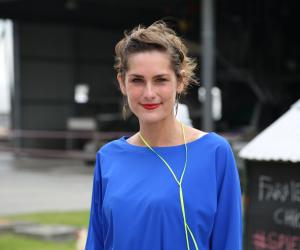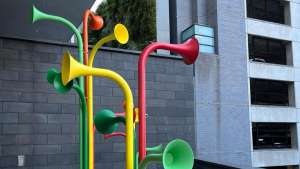Behavioural research shows that our brain uses our visual capacities to register the amount of food we have eaten. For example, if we eat shelled peanuts and leave the shells on the table we will eat less than if we would take the shells away directly after eating the peanuts. In the words of food psychologist Brian Wansink (Cornell University), we are not designed to actually keep track of how much we’ve consumed. Most of us seem to rely on the size - the volume - of the food to tell us when we’re full. We usually try to eat the same visible amount of food we’re used to eat.
“I love behavioral science studies and food psychology,” says eating designer Marije Vogelzang. “For a while now I have been contemplating about how we can use insights from these studies into tangible design. For the exhibition Food Revolution 5.0 at Museum für Kunst und Gewerbe, Hamburg I used this knowledge and made a project – Volumes – to propose a way of eating less while at the same time experiencing more.”
Volumes is a research and development project that led to the creation of a series of inedible objects that are placed directly on the plate among the food. Vogelzang's aim is to influence our eating behavior and our eating culture.
We have the tendency to overeat and are visually mislead by large plates and wide glasses. By adding volumes to your plate your brain will register more food than there actually is.
The strangely shaped objects also enable the eater to place the food on their plate with more care and attention. They provide for playfulness and experimentation around how to serve food. Their odd, organic shapes (almost organ-like) are designed to trick the user into thinking of them as edible: food is never clean or perfectly geometrical.
“By giving more attention to the presentation of our food we might be able to change our mindless consumption behavior into a mindful experience,” says Vogelzang. She also points out that tableware has grown over the centuries alongside consumer behaviour.
At the moment, Volumes is a whole collection of prototypes made from found stones and food-safe and heat-resistant silicone. The stones add weight to the plate and can be added to hot water to keep food warm or put in the freezer to keep food cold so the eater can take more time eating. The shapes sticking out of the stone are made to support your food styling and can carry a single piece of food or sauce.
The exhibition Food Revolution 5.0 will be opening on 18 May 2017.








